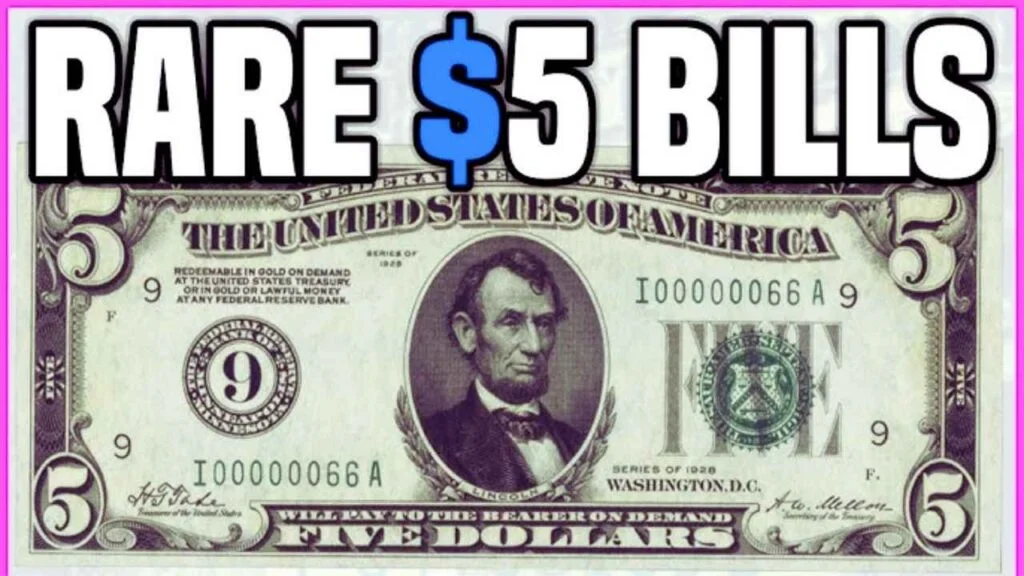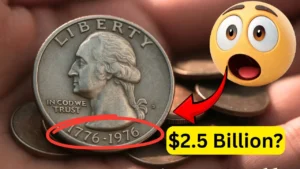How to Spot a 1995 $5 Bill with an Upside-Down Seal? Some rare $5 bills from 1995 have a unique printing error—an upside-down Treasury seal—that makes them valuable to collectors. This guide will help you identify these special bills in simple steps, using easy-to-understand language. Whether you’re a collector or just curious, learning how to spot this error can turn pocket change into a small treasure!
What Makes the 1995 $5 Bill Special?
In 1995, a small batch of $5 bills was printed with an upside-down Treasury seal due to a mistake at the Bureau of Engraving and Printing. These errors are rare and highly sought after by collectors, often fetching higher prices than their $5 face value. Knowing what to look for can help you find one of these unique bills.
Why Are Error Bills Valuable?
Printing errors, like the upside-down seal, are uncommon because the U.S. Mint has strict quality controls. When a mistake slips through, it creates a rare item that collectors love. The 1995 $5 bill with this error is a great example of a collectible that can be worth more than its denomination.
How to Identify a 1995 $5 Bill with an Upside-Down Seal

To spot this rare bill, you need to check specific features. Here’s a step-by-step guide:
Step 1: Check the Year
Look at the front of the $5 bill. The year “1995” should be printed near the bottom right, close to Abraham Lincoln’s portrait. If the year isn’t 1995, it’s not the bill you’re looking for.
Step 2: Examine the Treasury Seal
The Treasury seal is a green, circular emblem on the right side of the bill’s front. On a normal $5 bill, the seal is oriented correctly (readable when the bill is held upright). On the error bill, the seal is upside down. To check:
- Hold the bill with Lincoln’s face upright.
- Look at the green seal. If the text and design appear rotated 180 degrees, you’ve found the error!
Step 3: Verify the Series
The series designation, like “Series 1995,” is printed near the year or on the left side of the bill. Confirm it says “1995” to ensure it’s from the correct printing batch.
Step 4: Check for Other Features
Here are additional details to confirm you have the right bill:
- Portrait: Abraham Lincoln should be in the center.
- Denomination: The bill should clearly say “$5” in multiple places.
- Federal Reserve Bank: The bill will have a Federal Reserve Bank name and letter (e.g., “B” for New York).
- Serial Number: A unique 11-digit serial number in green ink appears on the front.
If all these match and the Treasury seal is upside down, you likely have the rare 1995 error bill.
Table: Key Features of the 1995 $5 Bill with Upside-Down Seal
| Feature | Description |
| Year | 1995, printed near the bottom right. |
| Treasury Seal | Green, circular, upside-down when the bill is held with Lincoln upright. |
| Series | “Series 1995” printed on the front. |
| Portrait | Abraham Lincoln in the center. |
| Denomination | Marked as “$5” in multiple spots. |
| Serial Number | 11-digit number in green ink. |
Why Collectors Want This Bill
Error bills are exciting because they’re rare and tell a story of a mistake in the printing process. The upside-down seal on the 1995 $5 bill makes it stand out, and collectors are willing to pay a premium for it. Depending on the bill’s condition, it could be worth $50 to several hundred dollars, especially if it’s in crisp, uncirculated condition.
How to Assess the Bill’s Condition
Collectors value bills based on their condition. Here’s what to look for:
- Uncirculated: No folds, creases, or wear; looks brand new.
- Fine: Slight wear, minor folds, but still clean and intact.
- Poor: Torn, heavily creased, or faded; less valuable.
If your bill is in great shape, it could fetch a higher price. Store it in a protective sleeve to keep it safe.
Where to Find These Bills
You might already have one in your wallet! Here are places to check:
- Your Cash: Look through any $5 bills you have.
- Change from Stores: Check bills you get as change.
- Banks or ATMs: Fresh bills from banks might include older ones.
- Coin Shops or Collectors: Visit local coin shops or online marketplaces like eBay to see if they have this bill.
How to Sell or Value Your Bill
If you find a 1995 $5 bill with an upside-down seal, you can:
- Get It Appraised: Take it to a professional coin or currency dealer for an expert opinion.
- Check Online: Look at recent sales on eBay or auction sites to gauge its value.
- Sell It: List it on eBay, Etsy, or through a currency dealer. Be sure to describe the error and condition clearly.
FAQs About the 1995 $5 Bill with an Upside-Down Seal
What makes the 1995 $5 bill with an upside-down seal valuable?
The upside-down Treasury seal is a rare printing error, making the bill a collector’s item worth more than its $5 face value.
How can I tell if my $5 bill is from 1995?
Check the year printed on the front, near the bottom right or left. It should say “1995.”
How much is the error bill worth?
Depending on its condition, it can be worth $50 to several hundred dollars. Uncirculated bills are more valuable.
Where can I sell my 1995 $5 error bill?
You can sell it through coin shops, online marketplaces like eBay, or currency auctions.
Are all 1995 $5 bills valuable?
No, only those with the upside-down Treasury seal are considered rare and valuable.
Conclusion
The 1995 $5 bill with an upside-down Treasury seal is a hidden gem for collectors and anyone with a keen eye. By checking the year, seal orientation, and other features, you can spot this rare error bill in your pocket change. Whether you’re a seasoned collector or just curious, this guide makes it easy to identify and understand the value of this unique piece of currency. Next time you get a $5 bill, take a closer look—you might have a small treasure in your hands!




